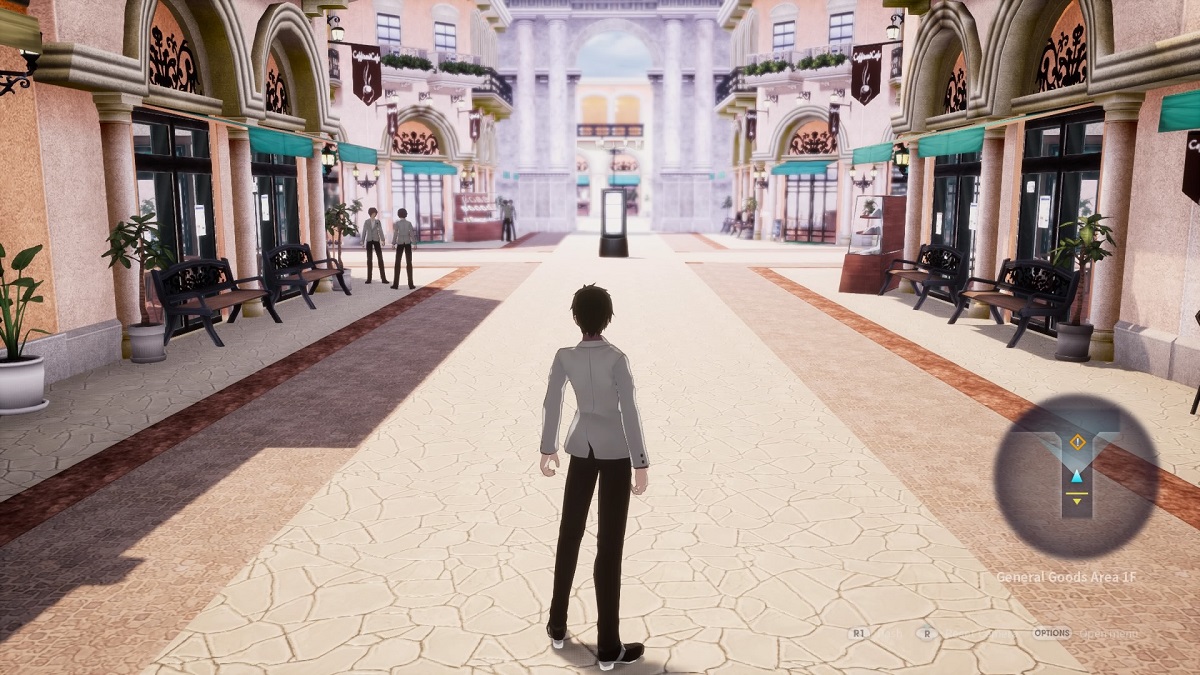In 2018, an anime by the name of Caligula aired, and it wasn’t very good. However, I caught a glimpse of something worthwhile buried under the mountain of trash. So, when I found out the anime was based on a forgotten PlayStation Vita game, The Caligula Effect, and that it’d receive a remastered version subtitled Overdose the following year, I decided to give it a shot. Unfortunately, it wasn’t very good, either.
Well — that is until I made it a few dungeons into this Persona-like social sim and realized not only that I was correct in seeing something worthwhile in the awful anime adaptation, but also that this series has some of the most complex and groundbreaking music of any JRPG in its weight class.
Yes, I’m aware that what I’m about to write might make some think I’ve lost my marbles, but The Caligula Effect: Overdose and its sequel, The Caligula Effect 2, have some of the best soundtracks I’ve ever heard. To start, we need to (lightly) discuss The Caligula Effect‘s story and how it ties directly to the soundtrack’s presentation.

A story worth a thousand notes
In The Caligula Effect: Overdose, the world’s equivalent of Hatsune Miku attains sentience and, in an act of apparent goodwill, decides humanity would be happier if they were trapped in The Matrix. So, with the help of a malignant group of humans calling themselves the Ostinato Musicians, the Virtuadoll, known as μ (mu), pulls a bunch of humans with mental illnesses and hangups into the world of Mobius.
You play as a member of the Go-Home Club, a group composed of people who are aware the world around them is nothing but fiction and want to return to reality. Each major level/dungeon has you facing a member of the Ostinato Musicians, who are also aware of the fiction that is Mobius. Those guys are content with living in ignorance, though. And, with each musician either defeated or recruited to your side, you get one step closer to returning to the real world — regardless of the pain that’s waiting for you.
I say all this to emphasize how the music ties directly to the game’s narrative. In each level, you’ll face one of the Ostinato Musicians, who are in-universe producers writing music for Mu, which manifests as the theme music for the corresponding dungeon.

As players explore the dungeon they’ll hear an instrumental version, but as soon as they enter a battle, it transitions to a fully-produced rendition of that same song, complete with vocals by Mu voice actor Reina Ueda. No dungeon uses the same song twice, meaning they created a total of fourteen songs that could exist entirely independent of the context of the game’s story, but are even better with context. To add another layer, a true-to-life producer crafted each of these tracks, with talent such as cosMo@Bousou-P, OSTER project, 40mp, PolyphonicBranch, Chouchou-P, Asa, 164, YM, Utsu-P, Pinocchio-P, and DECO*27.
Because each dungeon’s theme song contains lyrics that represent the corresponding Musician’s mental state, if you’d like to learn about any of them before you start playing, you could simply read the lyrics. For example, the lyrics for my favorite of the Musicians — Wicked — contain the following: “If it’s a neverending dream / then let’s just destroy everything! / That shitty world is / not needed. This is my dream!”
There’s also another favorite, Shadow Knife. Those lyrics read: “I will take on the power from the god of this world / if everyone can be saved right now! / I shall become the substitute! / Now! Bring down the hammer of justice!”
And that’s not even mentioning The Caligula Effect 2’s soundtrack, which does everything I mentioned here — and then some. I mean, that game manages to take more than one song from the first game and recontextualize it in ways I didn’t think possible. These musicians truly are phenomenal at their craft.
I suppose all this to say — play The Caligula Effect: Overdose and its sequel. Or, at the very least, listen to the soundtrack on Spotify, because as I said, the music for this game is enjoyable with or without the story-based context the game provides. And, it’s for that reason I’m still jamming to it four years later.


